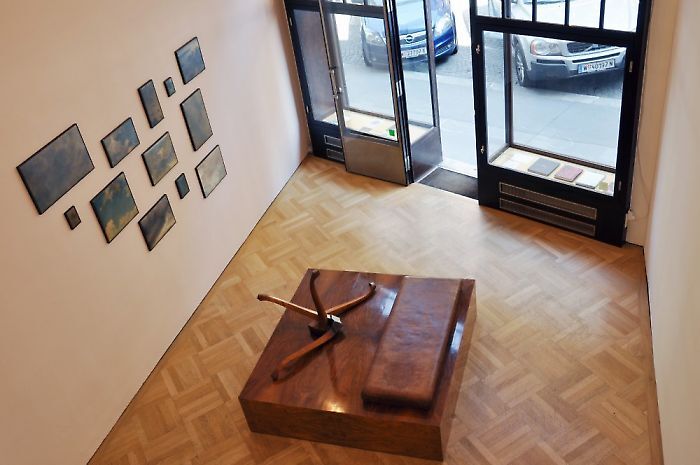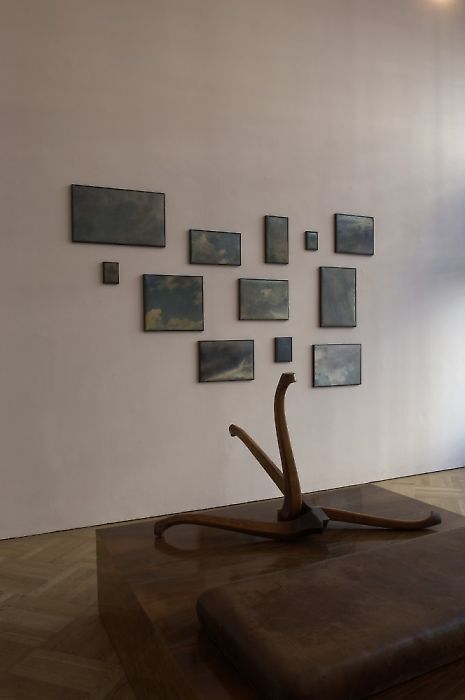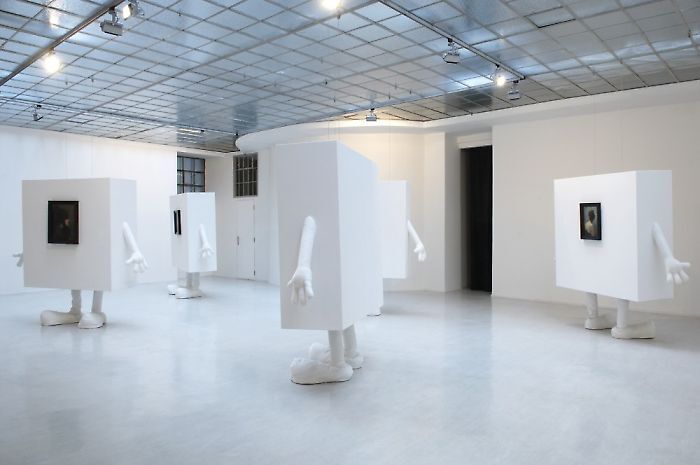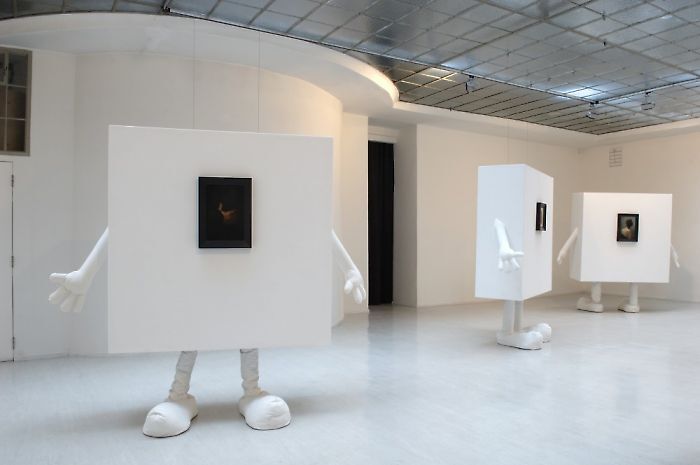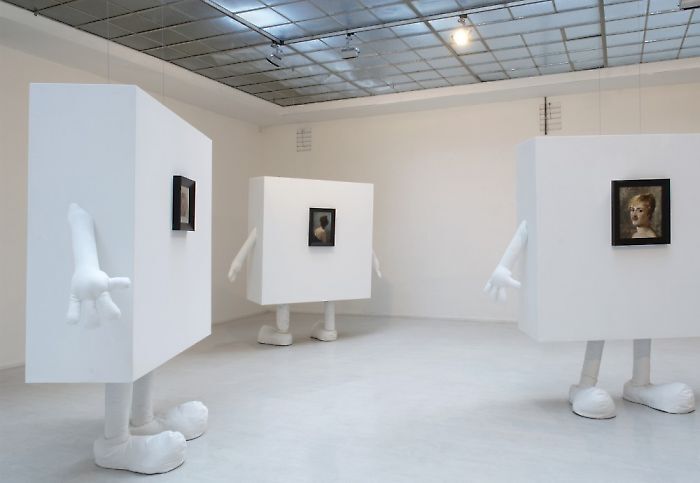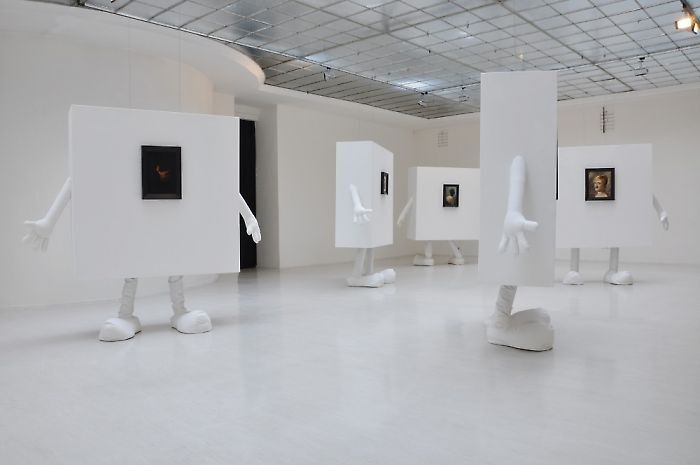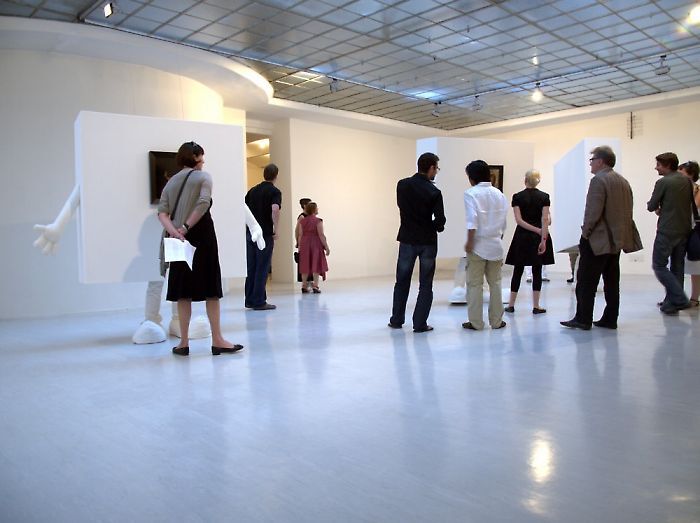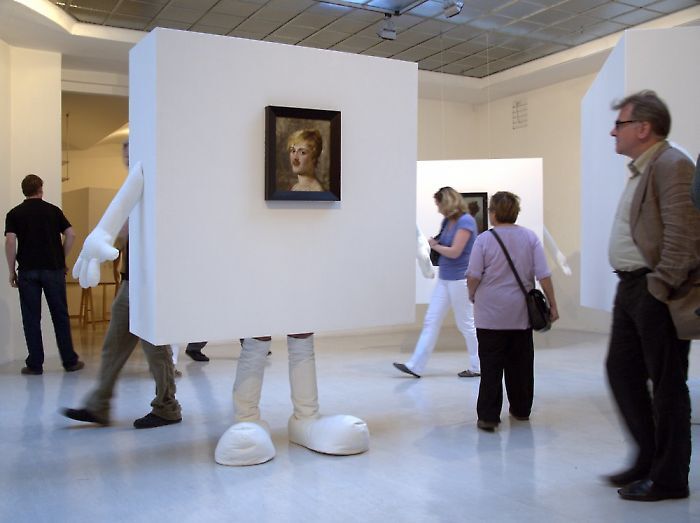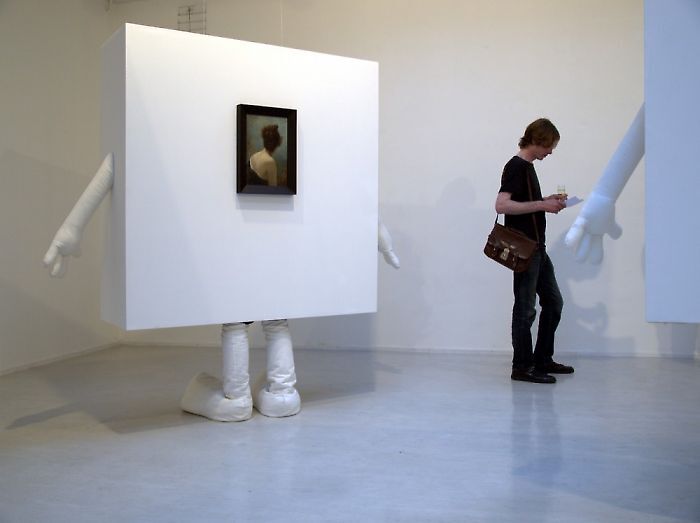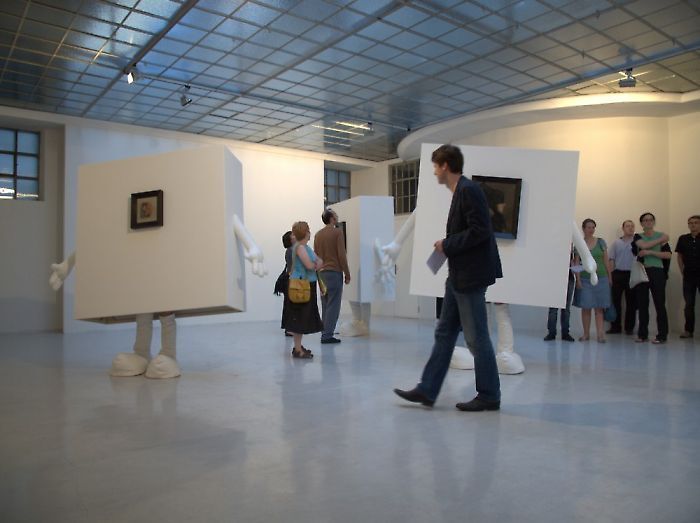—
Markus Schinwald
Markus Schinwald dedicated his 2009 exhibition in Kunsthaus Bregenz to the sitcom, a pop culture format that, at least in its reception, is positioned rather low in the cultural hierarchy. For his exhibition at Georg Kargl Fine Arts, Schinwald has taken another step down the ladder and produced mascots in the form of moving exhibition walls. Though the visual appearance seems contrary to Markus Schinwald’s works to date and looks like a radical break in style, he is true to his established framework. Here we also find a confrontation with the human body and its sensibilities, with the architecture and display traditions of the visual arts. And not to be overlooked – the mode of appropriation. In contrast to most of his previous works, the material he uses does not presently have a place in the canon of the visual arts, rather it is an insignia of pop culture.
Originally, the mascot was a 19th century creation that developed into a comic representation of individual craft guilds, a kind of lucky talisman. Today, it seldom has a good luck charm function; instead, it serves as a marketing form or as entertainment for children. Schinwald’s mascots are neither part of a marketing strategy, nor are they intended for children, rather they are more to be understood as a reflection on pop culture as it appears in front of an art (or highbrow) background.
In the foremost room of the gallery, Schinwald has arranged an ensemble of fragmented skies, excluding the landscape itself from a number of landscape paintings of varying ages, and concentrating solely on the atmosphere. The sky is the place where, at least visually, nothing changes – a blue nothing.
This collection is accompanied by manipulated pieces of furniture. Schinwald has broken down Chippendale-style tables, only to fit them together again in a new, incorrect form. Here, they are arranged elegantly on a pedestal, while below, the sculptures hang in canvas sacks on the wall, partly obscuring their form, distending and stretching the cloth like ill-fitted garments. In the highest Victorian period, the legs of table and chairs were often disguised with cloth garments that imitated pantaloon underwear, as the furniture legs were considered to be too suggestive of their human counterparts. Here, the anthropomorphic quality of Schinwald’s sculptures is accentuated, rather than disguised, by the enveloping fabric.
Inquiry
Please leave your message below.
